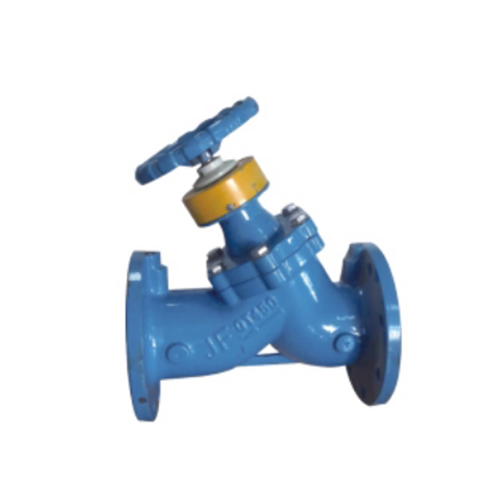
Check Valve Applications in the Pharmaceutical Industry
Introduction
Check valves are essential components in fluid handling systems, ensuring unidirectional flow and preventing backflow, which is critical in maintaining process integrity, product quality, and safety. In the pharmaceutical industry, where stringent regulatory standards and contamination control are paramount, check valves play a crucial role in various applications, including sterile processing, clean-in-place (CIP) systems, and biopharmaceutical manufacturing.
This paper explores the applications of check valves in the pharmaceutical industry, their design considerations, material selection, and compliance with industry standards such as FDA, cGMP, and ASME BPE. Additionally, it discusses the challenges associated with check valve selection and maintenance in pharmaceutical processes.
---
1. Importance of Check Valves in Pharmaceutical Processes
The pharmaceutical industry demands high levels of hygiene, sterility, and precision in fluid handling. Check valves contribute to these requirements by:
- Preventing Contamination – Backflow can introduce contaminants, compromising product purity. Check valves ensure fluids flow in one direction only.
- Maintaining Sterility – In sterile processing, check valves prevent reverse flow that could introduce microbial contamination.
- Protecting Equipment – By preventing reverse flow, check valves safeguard pumps, filters, and other sensitive components.
- Ensuring Process Efficiency – Properly functioning check valves minimize pressure drops and optimize fluid transfer.
Given these benefits, check valves are widely used in pharmaceutical manufacturing, including:
- Liquid and powder transfer systems
- Sterile filling and dispensing
- Clean-in-place (CIP) and sterilize-in-place (SIP) systems
- Bioreactors and fermentation processes
- Water-for-injection (WFI) and purified water systems
---
2. Types of Check Valves Used in Pharmaceutical Applications
Different types of check valves are employed based on flow characteristics, pressure requirements, and sterility considerations. The most common types include:
2.1. Swing Check Valves
- Design: A hinged disc swings open with forward flow and closes under backpressure.
- Applications: Used in low-viscosity liquid transfer, such as WFI and buffer solutions.
- Advantages: Low pressure drop, easy maintenance.
- Limitations: Not suitable for pulsating flows; potential for water hammer.
2.2. Spring-Loaded Check Valves
- Design: A spring mechanism ensures rapid closure, minimizing backflow.
- Applications: Ideal for high-purity systems, CIP/SIP processes, and biopharmaceutical manufacturing.
- Advantages: Fast response, reduced water hammer, suitable for vertical/horizontal installation.
- Limitations: Higher pressure drop compared to swing check valves.
2.3. Diaphragm Check Valves
- Design: A flexible diaphragm opens under pressure and seals tightly when flow stops.
- Applications: Used in sterile processing, single-use systems, and aseptic filling.
- Advantages: No dead legs, easy to clean, minimal risk of contamination.
- Limitations: Limited to low-pressure applications.
2.4. Ball Check Valves
- Design: A free-floating ball moves with flow and seats to block reverse flow.
- Applications: Suitable for viscous fluids, slurries, and powder transfer.
- Advantages: Simple design, self-cleaning action.
- Limitations: Not ideal for high-precision applications due to potential leakage.
2.5. Dual-Plate Check Valves
- Design: Two spring-loaded plates open and close with flow direction.
- Applications: Used in high-flow systems, such as large-scale bioreactors.
- Advantages: Compact, low pressure drop, reduced water hammer.
- Limitations: Higher cost compared to standard swing check valves.
---
3. Material Selection for Pharmaceutical Check Valves
Material compatibility is critical in pharmaceutical applications to prevent leaching, corrosion, and contamination. Common materials include:
3.1. Stainless Steel (316L)
- Advantages: High corrosion resistance, durability, and compliance with FDA/cGMP standards.
- Applications: Used in WFI systems, CIP/SIP processes, and high-pressure applications.
3.2. PTFE (Teflon) and EPDM
- Advantages: Chemically inert, suitable for aggressive solvents and acids.
- Applications: Diaphragm check valves, sterile processing.
3.3. Polypropylene (PP) and PVDF
- Advantages: Lightweight, cost-effective, resistant to chemicals.
- Applications: Single-use systems, low-pressure transfer lines.
3.4. Hastelloy and Titanium
- Advantages: Exceptional corrosion resistance for extreme conditions.
- Applications: Biopharmaceutical reactors, high-purity processes.
---
4. Regulatory Compliance and Industry Standards
Pharmaceutical check valves must comply with stringent regulations, including:
- FDA 21 CFR Part 210/211: Ensures materials are non-toxic and non-leaching.
- ASME BPE (Bioprocessing Equipment): Defines surface finish, design, and cleanability.
- EU GMP Annex 1: Covers sterile manufacturing requirements.
- USP Class VI: Certifies biocompatibility for elastomers.
Manufacturers must validate check valves for cleanability, sterility, and particulate control.
---
5. Challenges in Pharmaceutical Check Valve Applications
Despite their benefits, check valves present challenges:
- Dead Legs and Cleanability: Poorly designed valves can trap fluids, increasing contamination risk.
- Particulate Generation: Wear and tear may introduce particles into the process stream.
- Maintenance Requirements: Frequent cleaning and inspection are necessary to prevent failures.
- Pressure Drop Issues: Some designs may restrict flow, affecting process efficiency.
---
6. Best Practices for Check Valve Selection and Maintenance
To optimize performance:
- Select the Right Type: Match valve design to fluid properties and process requirements.
- Ensure Proper Installation: Follow manufacturer guidelines to prevent misalignment.
- Implement Regular Inspections: Check for wear, leakage, and cleanliness.
- Use Sanitary Designs: Opt for valves with smooth surfaces and minimal crevices.
---
Conclusion
Check valves are indispensable in pharmaceutical manufacturing, ensuring process integrity, sterility, and regulatory compliance. By selecting the appropriate valve type, material, and design, pharmaceutical companies can enhance efficiency while minimizing contamination risks. Continuous advancements in valve technology, such as single-use and smart check valves, will further improve reliability in this highly regulated industry.
Through adherence to industry standards and best maintenance practices, pharmaceutical manufacturers can maximize the lifespan and performance of check valves, ensuring safe and high-quality drug production.
Situs web ini menggunakan cookie untuk memastikan Anda mendapatkan pengalaman terbaik di situs web kami.
Komentar
(0)